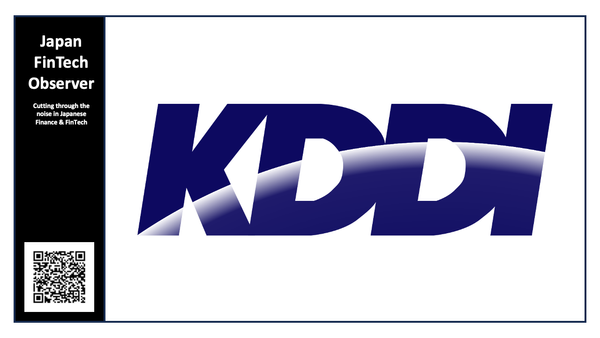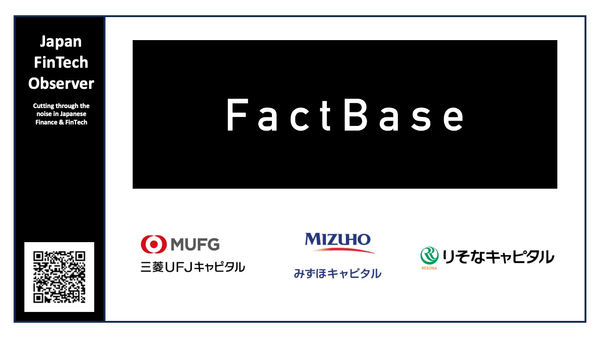FSA Discussion Paper on Regulatory Frameworks for Crypto Assets

In light of the current state of cryptocurrency transactions, the Financial Services Agency has been examining the state of systems related to cryptocurrencies, as outlined in the Financial Administration Policy for Fiscal Year 2024. They have compiled the results of that examination in the form of a discussion paper released on April 10, 2025.
The paper aims to solicit broad public opinion on the current state and future direction of crypto asset regulation in Japan, considering the rapid technological advancements and evolving environment surrounding these assets. It acknowledges the previous regulatory developments and highlights the need for further adjustments to foster a sound crypto asset market, protect users, and promote innovation in the Web3 space. The public comment period ends on May 10, 2025.
Background and Current Status
Previous Regulatory Developments
Japan has been proactive in establishing crypto asset regulations, starting with amendments to the Payment Services Act in 2016 (effective 2017) to address money laundering/terrorist financing (ML/TF) and user protection following exchange failures. This introduced a registration system for crypto asset exchange service providers (CASPs), KYC/AML obligations, and user protection measures like segregation of client assets.
Further revisions in 2019 (effective 2020) addressed issues like deficient internal controls at CASPs and illicit outflows. These amendments mandated pre-notification for changes in listed crypto assets, strengthened advertising and solicitation regulations, and required the management of user crypto assets in cold wallets. Regulations on crypto asset derivatives and the classification of ICO tokens with profit distribution rights under the Financial Instruments and Exchange Act (FIEA) were also introduced, alongside the prohibition of unfair trading practices.
In 2022 (effective 2023), amendments to the Act on Prevention of Transfer of Criminal Proceeds, based on FATF recommendations, implemented the "travel rule," requiring CASPs to notify information about the originator and beneficiary of crypto asset transfers.
Recent legislative proposals aim to prevent the outflow of assets during CASP bankruptcies by enabling domestic asset holding orders and establishing a new intermediary business category for those solely mediating crypto asset sales.
Current Market Trends
The discussion paper highlights significant changes in the crypto asset landscape since the 2019 revisions.
- Increased Adoption: The user base for crypto assets has expanded. As of January 2025, the number of accounts at registered CASPs exceeds 12 million, with user deposits surpassing ¥5 trillion.
- Investment as a Primary Driver: While some use as a payment method exists, trading is primarily investment-driven.
- Institutional Interest: Institutional investors in the US increasingly invest in Bitcoin spot ETFs, with over 1,200 companies involved, including long-term investors like public pension funds. Similar trends are observed internationally, with Bitcoin spot ETFs listed in Canada and Australia. Domestic institutional investors also show growing interest in crypto assets for diversification.
- Web3 Potential: The paper acknowledges the potential of Web3 businesses and blockchain technology to solve social issues and improve productivity, citing benefits like lower-cost and faster international remittances, enhanced transaction traceability, and reduced settlement risks through smart contracts.
- Increased Scrutiny as Investment Asset: The recognition of crypto assets as investment targets necessitates a re-evaluation of regulations to ensure investor protection and market integrity.
Emerging Risks and Challenges
Alongside increasing adoption, the paper identifies growing concerns.
- Fraudulent Activities: There is a rise in fraudulent investment solicitations related to crypto assets, with the FSA's "Financial Services User Consultation Office" receiving over 300 complaints and consultations monthly.
- Misuse for Illicit Purposes: Concerns remain regarding the use of crypto assets for the transfer of criminal proceeds and the potential for hacking incidents at CASPs to contribute to terrorist financing.
- Inadequate Information Disclosure: Issues exist with the clarity and accuracy of information disclosed during new crypto asset issuances, particularly in white papers provided indirectly by CASPs based on self-regulation. The creators of these white papers are not legally obligated to provide accurate information.
- Activities Beyond Exchange Services: The emergence of investment seminars and online platforms offering crypto asset-related advice raises concerns about potential illicit activities and the need for appropriate oversight.
- Market Integrity Concerns: The increasing institutional investment and listing of crypto asset ETFs internationally highlight the growing importance of ensuring fair price formation and trading practices. The lack of specific insider trading regulations for crypto assets in Japan, despite similar regulations for listed securities, is noted in light of international developments (IOSCO recommendations, EU's MiCA, South Korea's regulations, and US enforcement cases).
Basic Principles for Regulatory Review
Balancing User Protection and Innovation
The core principle guiding the regulatory review is to strike a balance between enhancing user protection and fostering innovation in the Web3 ecosystem. Overly strict regulations could stifle domestic Web3 businesses, potentially leading users and businesses to offshore platforms (including DEXs), thereby reducing the effectiveness of user protection and harming Japan's competitiveness.
Leveraging Existing Legal Frameworks
While the possibility of establishing a comprehensive legal framework for digital assets is acknowledged, the immediate priority is to address current issues within the existing legal structure, potentially by leveraging the mechanisms and enforcement capabilities of the FIEA, which traditionally deals with similar issues related to information disclosure, investment fraud, and market integrity.
Considering the Nature and Special Characteristics of Crypto Assets
Any regulatory review must carefully consider the unique characteristics of crypto assets and the fact that the same assets can be traded globally, necessitating attention to international regulatory harmonization.
The discussion paper proposes categorizing crypto assets based on their functional characteristics to tailor regulations appropriately:
- Type ① (Funding/Business Activity Type): Crypto assets issued as a means of fundraising, with the proceeds used for projects, events, or community activities (e.g., some utility tokens).
- Type ② (Non-Funding/Non-Business Activity Type): Crypto assets that do not fall under Type ① (e.g., Bitcoin, Ether, and meme coins).
This categorization is intended to inform the review of various regulatory aspects. The classification of individual crypto assets will require careful consideration of their nature and actual state. The potential for a crypto asset's nature to evolve (e.g., decentralization leading to a shift from Type ① to Type ②) must also be considered.
Specific Areas for Regulatory Review
The discussion paper identifies four key areas for potential regulatory reform.
Enhancement of Information Disclosure and Provision
Type ① Crypto Assets
- Strengthening information disclosure requirements for issuers to address information asymmetry with investors. This could involve direct obligations on issuers regarding the crypto asset's rules, algorithms, related parties, project details, and risks. Consideration should be given to requiring information disclosure for similar crypto assets issued overseas when sold in Japan.
- Regulation should focus on issuances involving solicitation to a large number of general investors, especially when exchange trading or sales services by CASPs are anticipated.
- The format and content of disclosures need to balance comparability with the unique characteristics of crypto assets, potentially allowing for some flexibility. The role of third-party verification by CASPs or self-regulatory bodies could be explored.
Type ② Crypto Assets
- Imposing obligations on CASPs handling these assets to explain relevant information and provide information about factors that could significantly impact price fluctuations.
- Challenges related to the extent of continuous information provision by CASPs who are not involved in the issuance or design and their reliance on publicly available information need to be considered.
- The increasing prevalence of non-custodial wallets and DEXs necessitates monitoring future developments in these areas.
Strengthening User Protection and Addressing Unregistered Operators
- Implementing more effective and stringent regulations to enhance user protection and deter illegal solicitations by unregistered operators (including those based overseas).
- Considering regulating investment management and advisory activities related to spot crypto assets that do not fall under the definition of crypto asset exchange services, given the rise of investment seminars and online platforms that may involve fraudulent activities.
- The need for regulatory action regarding token businesses not currently subject to regulation, such as staking services, is being considered. While CASPs offering staking services involving asset custody are already regulated, the need to regulate staking services where CASPs borrow assets without custody requires further observation. Risks associated with staking (liquidity risk, slashing) should be appropriately explained by CASPs offering these services.
- The issue of Maximal Extractable Value (MEV) in decentralized finance is noted. While directly regulating validators may be challenging due to their global distribution, user awareness of these risks through CASPs or industry bodies could be a potential approach. Continuous monitoring of unfair practices is also warranted.
- Regulating DEXs presents challenges due to the difficulty in identifying operating entities and jurisdictions. International cooperation would be crucial for effective regulation.
Addressing Improper Conduct Related to Investment Management and Advice
- Ensuring the proper operation of investment management and advisory activities related to crypto assets to protect users from potentially fraudulent schemes emerging through investment seminars and online platforms.
Ensuring Fairness in Price Formation and Trading
- Given the increasing international trend of crypto assets becoming investment targets (e.g., Bitcoin spot ETFs), there is a growing need to ensure fairness in price formation and trading.
- Regarding insider trading regulations, the paper revisits the reasons for not implementing rules similar to those for listed securities in 2018 (difficulty in clearly defining prohibited acts). However, considering international developments and enforcement cases, strengthening measures against insider trading in crypto assets may be necessary.
Possible Regulatory Responses
- (A) Introduction of Formal Regulations with Specific Violation Types: Similar to insider trading regulations for listed securities (FIEA Article 166 et seq.), requiring specific definitions for "material facts," "insiders," and "publication." Challenges include appropriately defining these terms considering the characteristics of crypto assets and establishing practical and clear publication standards, especially for assets without a specific issuer.
- (B) Introduction of Abstract and Substantive Regulations: Defining "material facts" more broadly (e.g., information likely to significantly affect investment decisions) and regulating trading based on the "use" of such information. This approach, similar to EU and South Korean regulations, would still require careful consideration of defining insiders and the concept of "publication." Challenges include the burden of proof for "use," reduced predictability of violations, and the need to justify differences from formal regulations for listed securities.
- (C) Utilizing General Prohibition of Fraudulent Acts (FIEA Article 185-22): Leveraging the existing prohibition of "fraudulent means, plans, or techniques" in crypto asset trading, similar to its potential application to egregious insider trading in listed securities. This could involve issuing guidelines specifying particularly malicious insider trading activities in the context of crypto assets, drawing parallels with US regulations. The challenge lies in clearly and specifically enumerating malicious acts, considering the diverse mechanisms and stakeholders in crypto assets.
Enhancing Enforcement Effectiveness
- Strengthening the organic collaboration between CASPs, self-regulatory bodies (like JVCEA), and the authorities (FSA) in market surveillance is crucial for effective enforcement against unfair trading practices, including insider trading. This includes enhancing the monitoring capabilities of CASPs and self-regulatory bodies and strengthening market surveillance by the authorities.
Future Considerations
The discussion paper emphasizes the importance of balancing user protection and innovation when considering specific regulatory revisions. Further deliberation is needed on the issues outlined, taking into account the diverse characteristics of crypto assets, the practicalities of crypto asset trading, international regulatory trends, and the feedback received on the discussion paper.
Please follow us to read more about Finance & FinTech in Japan, like hundreds of readers do every day. We invite you to also register for our short weekly digest, the “Japan FinTech Observer”, on LinkedIn, or directly here on the platform.
We also provide a daily short-form Japan FinTech Observer news podcast, available via its Podcast Page. Our global Finance & FinTech Podcast, “eXponential Finance” is available through its own LinkedIn newsletter, or via its Podcast Page.
Should you live in Tokyo, or just pass through, please also join our meetup. In any case, our YouTube channel and LinkedIn page are there for you as well.




